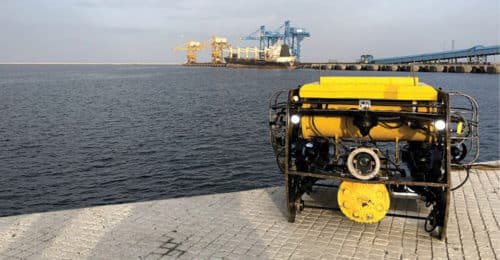Without proper care and maintenance, decades old infrastructure is often subject to catastrophic failures, causing loss of life and property. This makes it necessary to regularly assess and monitor assets, which is a complicated task especially for subsea structures like dams, bridges, ships, oil and gas platforms. This led to the foundation of IIT-Madras incubated startup Planys Technologies in 2015 with an aim to develop customisable robotic inspection and survey solutions for both onshore and offshore submerged structures.
“Majority of the subsea assessments are carried out by human scuba divers or deep-sea underwater robots. However, both methodologies pose drawbacks such as reduced productivity, depth limitations, insufficient agility, higher costs and much more. The concept that we introduced was completely new in India, and our team had a tough time convincing customers regarding the capability, robustness and accuracy of our service,” says Tanuj Jhunjhunwala, co-Founder and CEO, Planys Technologies.
The company has indigenously designed and manufactured commercial remotely operated vehicle (ROV) fleet that consists of compact, customisable, economical and modular ROVs to suit site requirements. On-board HD cameras with LED illumination and on-demand sensors along with active control algorithms enable stable real-time visual feedback, geotagging of locations and data acquisition through the ROVs. They can be easily deployed and controlled by operators/pilots outside of their working environment to operate efficiently for prolonged periods, go up to higher depths underwater in hazardous conditions and inaccessible locations, without risks to human operators. Tether Management system minimises the impact of underwater currents.
The AI-enabled Planys Assessment Dashboard (PAD) quickly analyses the data captured (through techniques like underwater nondestructive testing (NDT), advanced NDT) and can accurately predict steps for future maintenance, which helps asset owners and managers in taking better decisions.
Mike (840mm x 460mm x 400mm) is a 1000W electric ROV specifically built for inspection of offshore immersed structures. It has a dive capability of hundred metres, nominal speed of 0.4-0.5m/s, a 15MP, 720p HD, 30fps camera, six degrees of freedom control and unlimited endurance.

The next-generation ROV Beluga (730mm×820mm×600mm) has been designed to be more powerful than Mike. It comes with a greater thrust capacity, better vision and illumination system and can reach up to two hundred metres depth underwater. Besides visual feedback, this underwater drone can perform ultrasonic thickness measurements, cathodic protection potential measurements (for ships, offshore installations and other immersed structures), spot bio-fouling cleaning, and the like.
The company operates on a service model. Jhunjhunwala says, “We charge on a per day basis; the digital reporting service entails additional charges. Having completed over a hundred projects across various sectors like ports/terminals/shipping (clients: L&T, Visakhapatnam port, Chennai port, Ennore port), oil & gas (clients: HOEC, BPCL, IOCL, HPCL), desalination plants (in Chennai), power plants (at Nellore), dams (clients: Sathanur, Kakki Dam, Sholayar Dam, Bhadra Dam) and bridges (clients: Northern and Southern Railways, RVNL), we are currently scaling up operations to the Middle East, Europe and South-East Asia. Lately, features like advanced vision system, technology for inspection in extremely turbid waters and various underwater imaging technologies have been developed. Recently, we also started operations in the Netherlands and Saudi Arabia.”





